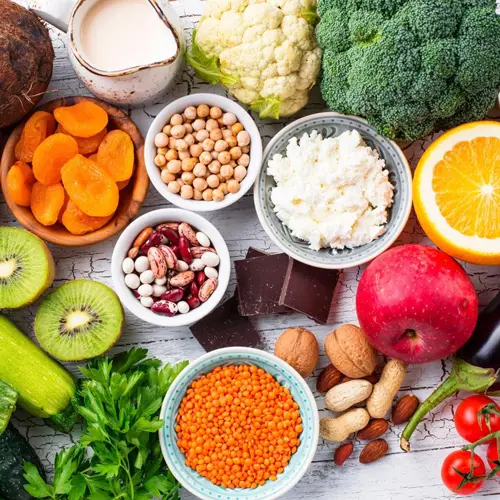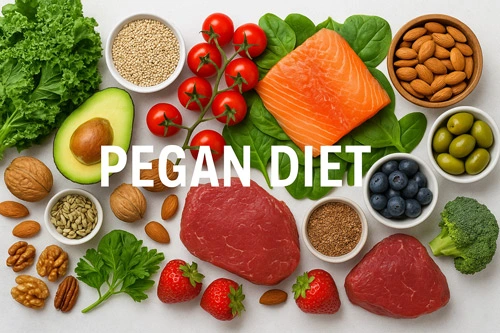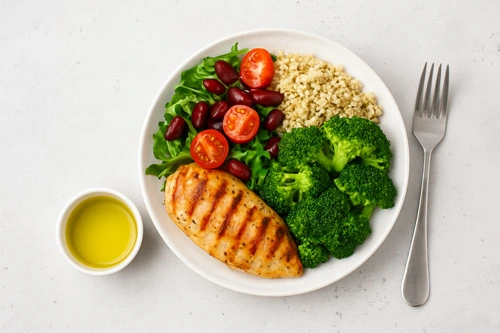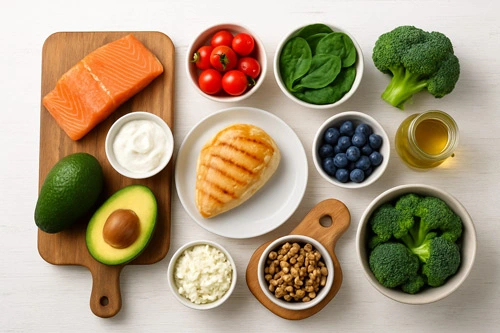Introduction
Maintaining a healthy lifestyle becomes increasingly important when dealing with chronic kidney disease, and one of the most critical elements of this care is following a renal diet. A renal diet is a specialized nutritional plan designed to support kidney function, reduce waste buildup in the blood, and minimize complications related to kidney damage. Whether you are in the early stages of kidney disease or undergoing dialysis, adhering to a proper renal diet can significantly impact your overall health and quality of life.
The kidneys are responsible for filtering waste, balancing fluids, and regulating essential minerals such as sodium, potassium, and phosphorus. When kidney function declines, these minerals can accumulate in the body, leading to serious health issues. That’s why dietary adjustments are essential. A renal diet helps limit these harmful buildups by controlling your intake of certain nutrients and guiding you toward kidney-friendly food choices.
In this comprehensive guide, we’ll cover everything you need to know about the renal diet: what it is, why it’s important, and how it can be implemented in daily life. You’ll discover detailed sample menus including renal diet breakfast, lunch, and dinner ideas, a clear renal diet food list to avoid, various types of renal diet depending on kidney function, and a practical renal diet chart for tracking your daily intake. We’ll also explore common renal diet restrictions and provide a flexible renal diet meal plan you can follow at home.
Whether you’re managing kidney disease yourself or supporting a loved one through their journey, this article will serve as a reliable roadmap for eating smarter and living better with kidney conditions.
1. What Is a Renal Diet and Why Is It Important?
A renal diet is a specially tailored eating plan designed for individuals with compromised kidney function. When the kidneys aren’t working properly, they lose their ability to filter waste, balance electrolytes, and regulate fluids. This can lead to the buildup of harmful substances in the blood, which in turn may worsen health outcomes and increase the risk of complications like high blood pressure, heart disease, or even kidney failure.
The goal of a renal diet is to minimize the workload on the kidneys and help maintain optimal function for as long as possible. This is done by carefully managing the intake of nutrients that are typically regulated by healthy kidneys—namely sodium (salt), potassium, phosphorus, and protein. By limiting these elements in your daily meals, you can significantly reduce the stress on your kidneys and prevent the accumulation of waste products in the bloodstream.
Another critical component of the renal diet is fluid control, especially for individuals undergoing dialysis. Since dialysis does not completely replicate the kidney’s function, patients may need to monitor their water and fluid intake to avoid fluid overload, which can lead to swelling, high blood pressure, and heart strain.
Importantly, the renal diet isn’t one-size-fits-all. It must be customized based on the stage of kidney disease, lab results, and whether the patient is on dialysis or not. That’s why consulting with a renal dietitian is highly recommended to develop a plan that fits your personal health needs.
Adhering to a proper renal diet also plays a key role in maintaining overall wellness. It can help you manage blood sugar levels (especially for diabetic kidney patients), maintain a healthy weight, and improve energy levels. Over time, the consistent application of this diet may even slow the progression of kidney disease.
In summary, the renal diet is more than just a food plan—it is a life-supporting strategy. Its importance lies in its ability to control symptoms, prevent complications, and enhance quality of life for those with kidney conditions.
learn more: Hashimoto Diet: Your Essential Guide to Thyroid Health
2. Types of Renal Diet
The types of renal diet vary depending on the stage of chronic kidney disease (CKD), whether the patient is on dialysis, and if they have undergone a kidney transplant. Since every stage of kidney disease affects how the body processes nutrients differently, each diet must be personalized to match those needs.
1. Pre-Dialysis Renal Diet (Stages 1–3 of CKD):
In the early stages of kidney disease, the goal is to preserve existing kidney function and prevent further damage. The focus is often on reducing sodium intake to control blood pressure, managing protein to reduce kidney workload, and limiting phosphorus to protect bones. Potassium may not yet be restricted, but it’s monitored closely as the disease progresses.
2. Advanced CKD Renal Diet (Stages 4–5, Before Dialysis):
As kidney function declines further, more restrictions are added. In this stage, a low-protein diet becomes more crucial because excess protein creates more waste products that the kidneys must filter. Potassium and phosphorus restrictions also become more stringent. A renal dietitian typically designs a highly specific eating plan based on lab results.
3. Dialysis Renal Diet:
For people on hemodialysis or peritoneal dialysis, the renal diet shifts again. Since dialysis removes some waste products but also depletes certain nutrients, the diet must strike a careful balance. Protein needs increase to compensate for protein lost during treatment. However, potassium, phosphorus, sodium, and fluid intake must still be tightly controlled to avoid dangerous imbalances.
4. Post-Transplant Renal Diet:
After a kidney transplant, the diet shifts toward healing and maintaining the health of the new kidney. Although some previous restrictions may be lifted, patients must now manage side effects of immunosuppressant medications, such as increased blood sugar and cholesterol. A heart-healthy, balanced diet is generally recommended, along with continued monitoring of potassium and sodium.
Understanding these types of renal diet is essential for patients and caregivers alike. Each version is designed to match the body’s changing nutritional needs as kidney function evolves. Working closely with healthcare professionals ensures the right adjustments are made at the right time, optimizing both kidney health and overall well-being.
3. Renal Diet Restrictions
When following a renal diet, understanding the essential restrictions is crucial to managing kidney health effectively. These limitations focus on reducing the intake of nutrients that can accumulate in the blood due to decreased kidney function, causing harmful effects.
Sodium Restriction
One of the primary restrictions in a renal diet is sodium (salt). Excess sodium increases blood pressure and causes fluid retention, both of which put extra strain on the kidneys and the heart. Patients are generally advised to limit sodium intake to less than 2,000 milligrams per day. This means avoiding processed foods, canned soups, salty snacks, fast food, and added table salt. Reading nutrition labels carefully is essential to avoid hidden sodium.
Potassium Restriction
Potassium is another mineral closely monitored in a renal diet. Healthy kidneys maintain potassium balance, but impaired kidneys may allow potassium to build up, leading to dangerous heart rhythms. Foods high in potassium such as bananas, oranges, potatoes, tomatoes, and spinach are often limited or portion-controlled depending on lab values. Cooking methods like leaching vegetables can reduce potassium content.
Phosphorus Restriction
High phosphorus levels can weaken bones and cause itching or other complications in kidney patients. Foods rich in phosphorus—such as dairy products, nuts, seeds, bran cereals, and cola drinks—are restricted. Many patients also take phosphate binders to help reduce phosphorus absorption from foods.
Protein Management
While protein is vital for overall health, in certain stages of kidney disease, especially before dialysis, limiting protein intake helps reduce kidney workload. However, during dialysis, protein needs actually increase due to losses during treatment. Balancing protein intake under medical supervision is key.
Fluid Restriction
In advanced kidney disease or dialysis patients, fluid intake may be limited to prevent swelling, high blood pressure, and heart problems. This includes all liquids and high-water-content foods like watermelon and soups.
Adhering to these renal diet restrictions requires awareness and planning but is essential for protecting kidney function and preventing complications. A renal dietitian can help tailor restrictions based on individual needs and lab tests, making the diet easier to follow and more effective.
learn more: Plant-Based Diet: A Complete Guide to Benefits, Foods & Weight Loss
4. Renal Diet Food List to Avoid
Following a renal diet means carefully choosing what foods to eat—and just as importantly, knowing which foods to avoid. Certain foods contain high levels of minerals and compounds that can worsen kidney function or lead to dangerous health issues when kidneys are impaired. Here is a detailed renal diet food list to avoid for anyone managing kidney disease:
High Potassium Foods
Potassium levels can quickly rise in patients with kidney disease, leading to cardiac problems. Avoid or limit:
-
Bananas
-
Oranges and orange juice
-
Potatoes and sweet potatoes (especially with skin)
-
Tomatoes and tomato products
-
Spinach, Swiss chard, and beet greens
-
Avocados
High Phosphorus Foods
Excess phosphorus can cause bone and heart problems. Foods to avoid include:
-
Dairy products like milk, cheese, yogurt
-
Nuts and seeds
-
Bran and whole-grain cereals
-
Cola and dark sodas
-
Processed meats with phosphate additives
High Sodium Foods
Too much sodium increases blood pressure and causes fluid retention. Avoid:
-
Canned soups and vegetables (unless low sodium)
-
Packaged snacks like chips and pretzels
-
Fast food and restaurant meals
-
Pickled foods and salted nuts
-
Processed and cured meats (sausages, deli meats)
Other Foods to Avoid
-
Excessive protein from red meats and organ meats if advised by your healthcare provider
-
Foods with artificial additives and preservatives that contain phosphorus
-
High-sugar foods that may contribute to diabetes and worsen kidney disease
By steering clear of these foods on the renal diet food list to avoid, patients can better control their mineral levels and reduce kidney stress. It’s also helpful to consult a renal dietitian who can guide portion sizes and recommend safe alternatives that keep meals tasty and varied.
5. Renal Diet Menu: Breakfast, Lunch, and Dinner Ideas
Creating a balanced and kidney-friendly renal diet menu is essential for maintaining good nutrition while protecting your kidneys. Below are practical and delicious examples of what a typical renal diet breakfast, lunch, and dinner might look like. These meal ideas consider common restrictions such as low sodium, potassium, and phosphorus.
Renal Diet Breakfast Ideas
-
Oatmeal made with water or a low-phosphorus milk alternative, topped with fresh berries (low potassium fruits like blueberries or strawberries)
-
Scrambled egg whites with a small serving of white toast (limit whole grains due to phosphorus)
-
A bowl of applesauce or sliced apples
-
Herbal tea or water (avoid high-sodium beverages)
Renal Diet Lunch Options
-
Grilled chicken breast with a side of steamed green beans and white rice
-
Turkey sandwich on white bread with lettuce and cucumber (avoid tomato and cheese)
-
A small portion of low-potassium fruit like pineapple or grapes
-
Water or unsweetened iced tea
Renal Diet Dinner Meals
-
Baked fish (such as cod or tilapia) seasoned with herbs (avoid salt)
-
Mashed cauliflower or peeled carrots as vegetable side dishes
-
Small serving of pasta or white rice
-
Fresh fruit salad with low-potassium fruits for dessert
Tips for a Successful Renal Diet Menu
-
Use herbs, lemon juice, and vinegar to add flavor without salt
-
Cook vegetables by boiling or leaching to reduce potassium content
-
Monitor portion sizes carefully, especially for protein and fluid intake
-
Plan meals ahead to avoid last-minute unhealthy choices
By following a structured renal diet menu like this, patients can enjoy flavorful, satisfying meals without compromising their kidney health. These meal ideas provide a foundation that can be customized with the help of a renal dietitian to meet individual preferences and medical needs.
6. Renal Diet Chart
A renal diet chart serves as a practical tool to help patients visualize and manage their daily nutrient intake. It simplifies complex dietary restrictions into an easy-to-follow format, allowing for better control of key minerals such as sodium, potassium, phosphorus, and protein.
What is a Renal Diet Chart?
The chart typically outlines recommended daily or weekly limits for various nutrients important in kidney disease management. It often includes sections for:
-
Sodium (usually less than 2,000 mg per day)
-
Potassium (levels vary but often limited between 2,000–3,000 mg)
-
Phosphorus (generally restricted to 800–1,000 mg)
-
Protein (amount varies depending on CKD stage or dialysis status)
-
Fluid intake (especially important for dialysis patients)
How to Use the Chart
Patients can use the renal diet chart to plan meals by checking the nutrient content of foods they intend to eat. Many charts categorize foods by their nutrient content — for example, grouping low-potassium fruits separate from high-potassium ones — which makes choosing safe options easier.
Sample Chart Example
| Nutrient | Daily Limit | Examples of Allowed Foods | Foods to Avoid |
|---|---|---|---|
| Sodium | < 2,000 mg | Fresh vegetables, unsalted nuts | Processed foods, canned soups, chips |
| Potassium | 2,000–3,000 mg | Apples, grapes, cauliflower | Bananas, oranges, potatoes |
| Phosphorus | 800–1,000 mg | White bread, rice, certain cereals | Dairy, nuts, dark sodas |
| Protein | Depends on stage | Chicken, fish, egg whites (limited portions) | Red meats (limited if pre-dialysis) |
| Fluid | Varies per patient | Water, herbal tea (restricted as needed) | High-water-content foods if limited |
Benefits of Using a Renal Diet Chart
-
Helps maintain nutrient balance
-
Makes grocery shopping and meal preparation easier
-
Encourages portion control and variety
-
Supports communication with healthcare providers
Using a renal diet chart regularly can empower kidney patients to take control of their diet, reduce the risk of complications, and support long-term kidney health.
7. Sample Renal Diet Meal Plan
A well-structured renal diet meal plan can make managing kidney disease easier by providing clear guidance on what to eat throughout the week. Here is a simple example of a one-day meal plan designed to balance nutrients while respecting common renal diet restrictions:
Breakfast
-
Oatmeal prepared with water, topped with fresh blueberries
-
One slice of white toast with a small amount of unsalted butter
-
Herbal tea or water
Mid-Morning Snack
-
A small apple or a handful of grapes
Lunch
-
Grilled chicken breast seasoned with herbs
-
Steamed green beans
-
White rice or pasta
-
Water or unsweetened iced tea
Afternoon Snack
-
Unsalted crackers with a low-phosphorus cheese substitute or a boiled egg white
Dinner
-
Baked cod with lemon and fresh herbs
-
Mashed cauliflower
-
Steamed carrots
-
Small portion of white bread
-
Fresh fruit salad with low-potassium fruits
Tips for Meal Planning
-
Adjust portion sizes based on individual calorie and protein needs
-
Use cooking techniques such as boiling and leaching to reduce potassium in vegetables
-
Plan ahead to avoid high-sodium convenience foods
-
Consult with a renal dietitian for personalized adjustments
This sample renal diet meal plan provides a foundation that can be adapted for longer periods or different tastes, helping patients maintain nutritional balance and kidney health.
Conclusion
In conclusion, following a carefully designed renal diet is essential for managing chronic kidney disease and supporting kidney function. By understanding the importance of the renal diet, recognizing the types of renal diet tailored to various stages of kidney health, and adhering to necessary renal diet restrictions, patients can reduce complications and improve their quality of life.
A well-planned renal diet menu, including thoughtfully chosen options for breakfast, lunch, and dinner, along with awareness of the renal diet food list to avoid, helps control the intake of harmful minerals like sodium, potassium, and phosphorus. Tools like a renal diet chart and structured renal diet meal plans simplify daily choices and promote consistency.
Always remember that kidney disease is unique to each individual, so working closely with healthcare professionals, especially a qualified renal dietitian, ensures the diet fits personal needs. Making informed food choices, staying disciplined, and embracing a renal-friendly lifestyle can make a significant difference in slowing disease progression and enhancing overall well-being.






